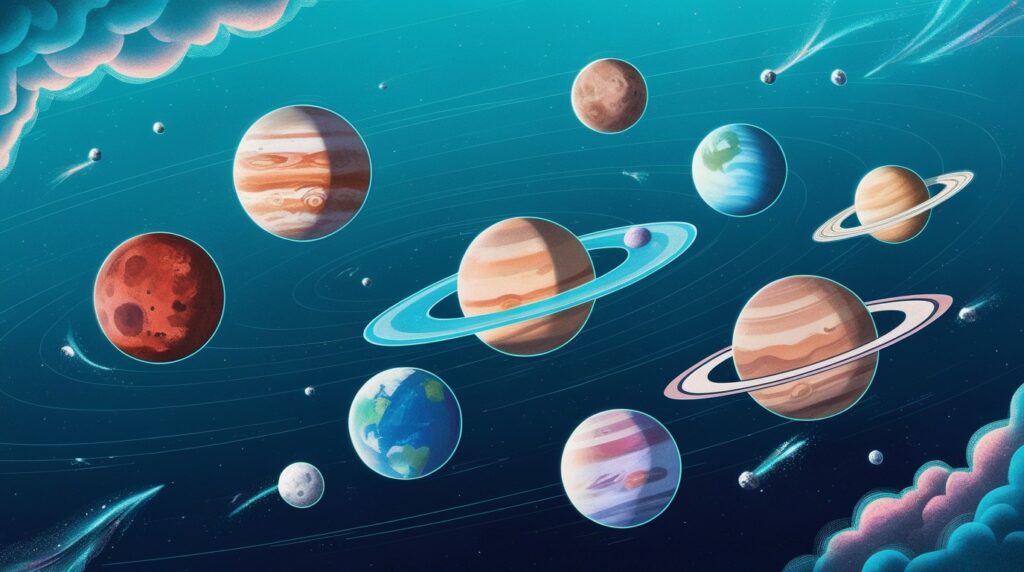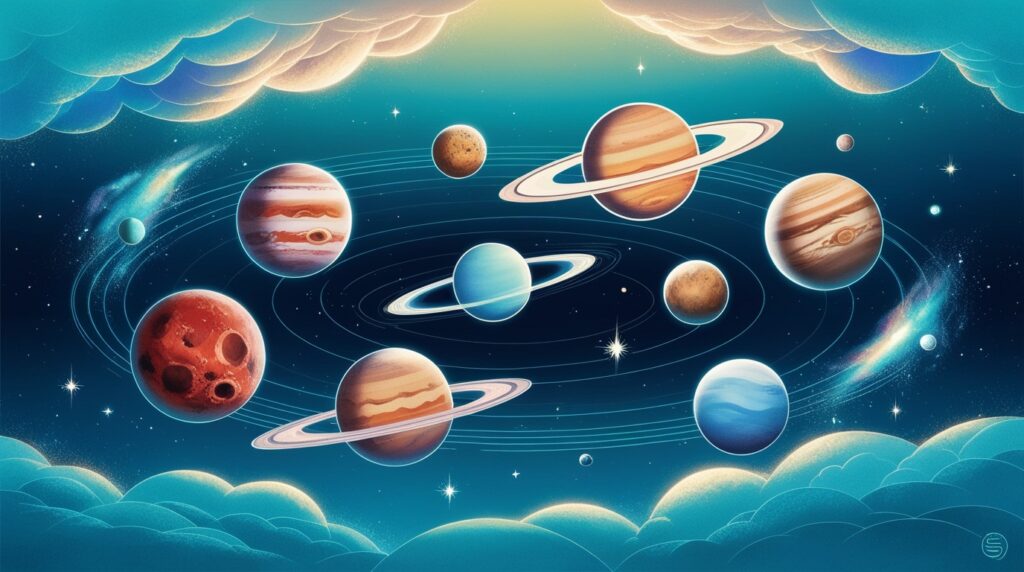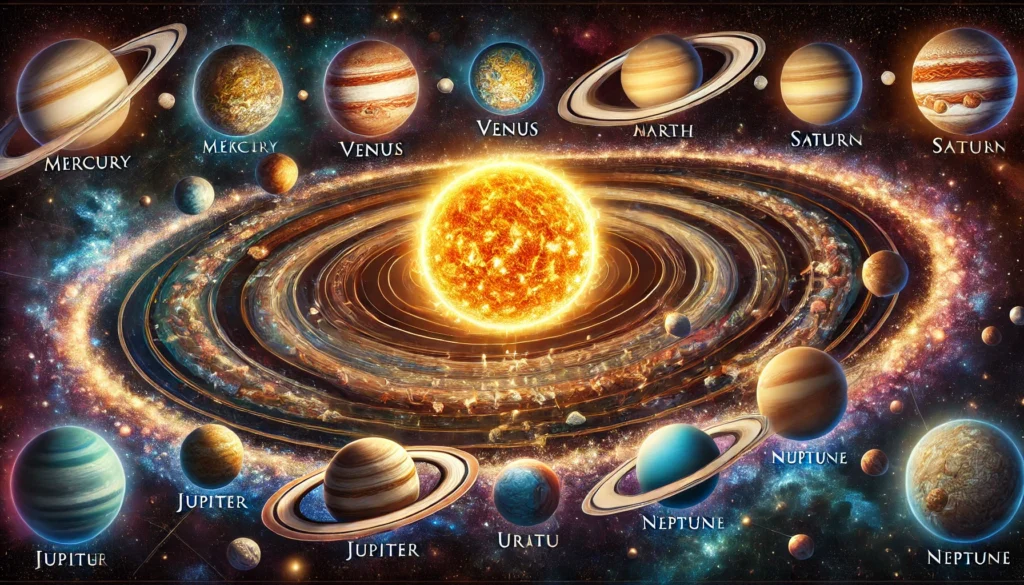The Solar System: A Cosmic Neighborhood

The solar system is an intricate and awe-inspiring assembly of celestial bodies bound together by the gravitational pull of the Sun. From its blazing center to the icy edges, it holds countless mysteries that have fascinated humanity for centuries.
Formation of the Solar System
The solar system was born about 4.6 billion years ago from a giant molecular cloud of gas and dust. This cloud collapsed under its gravity, forming a spinning disk. At the center, the Sun ignited through nuclear fusion, while the surrounding material coalesced into planets, moons, asteroids, and other celestial objects.
The Sun: The Heart of the Solar System
At the center of the solar system lies the Sun, a G-type main-sequence star. It accounts for 99.8% of the solar system’s mass and is the source of light and heat that sustains life on Earth. The Sun’s energy is produced through nuclear fusion, converting hydrogen into helium in its core.
The Inner Planets: The Terrestrial Worlds
Closest to the Sun are the rocky terrestrial planets:

- Mercury: The smallest planet, known for its extreme temperatures and cratered surface.
- Venus: A hot, hostile world with thick clouds of sulfuric acid and a runaway greenhouse effect.
- Earth: The only known planet to harbor life, with a diverse biosphere and liquid water.
- Mars: The “Red Planet,” with its dusty surface, polar ice caps, and evidence of past water flows.
The Asteroid Belt
Between Mars and Jupiter lies the asteroid belt, a region filled with rocky remnants from the solar system’s formation. The dwarf planet Ceres resides here, along with countless smaller asteroids.
The Outer Planets: The Gas and Ice Giants
Beyond the asteroid belt are the colossal outer planets:
- Jupiter: The largest planet, with a massive magnetic field, colorful cloud bands, and over 90 moons, including Europa and Ganymede.
- Saturn: Famous for its stunning ring system, composed of ice and rock particles.
- Uranus: An ice giant with a pale blue-green hue, tipped on its side due to a massive collision.
- Neptune: A deep blue ice giant known for its intense winds and dynamic weather patterns.
The Kuiper Belt and Dwarf Planets
Beyond Neptune lies the Kuiper Belt, a region of icy objects. It is home to dwarf planets like Pluto, Eris, and Makemake. This region also contains comets that occasionally venture into the inner solar system.
The Oort Cloud
At the farthest edges of the solar system, the hypothetical Oort Cloud is believed to surround the Sun in a spherical shell. This distant region is the source of long-period comets.
Moons, Rings, and Smaller Objects
The solar system also includes over 200 moons, such as Earth’s Moon, Saturn’s Titan, and Neptune’s Triton. Rings made of ice and dust encircle planets like Saturn, Uranus, and Jupiter. Additionally, meteoroids, comets, and interstellar dust populate the solar system.
Exploration and Future Prospects
Humans have explored the solar system through telescopes, robotic probes, and landers. Missions like Voyager, Cassini, and Mars rovers have provided invaluable insights. Future projects aim to establish human presence on Mars and search for life on moons like Europa and Enceladus.
A Cosmic Perspective

The solar system, though vast, is just one of billions in the Milky Way galaxy. Its complexity and diversity remind us of our small yet significant place in the universe, inspiring endless curiosity and exploration.






